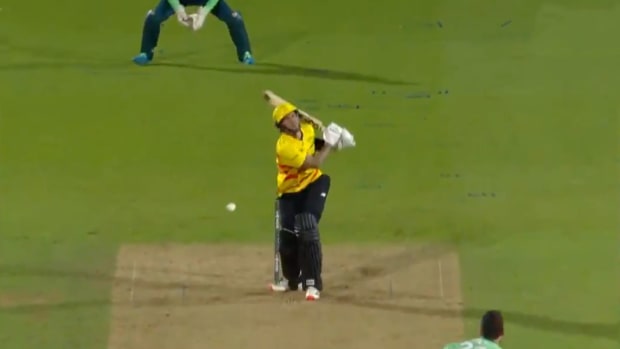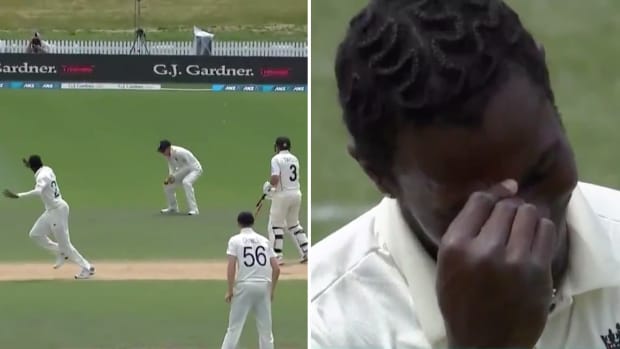Test case: Players, coaches expect day-nighters to be future
ADELAIDE, Australia (AP) The captains and coaches were unanimous in endorsing the concept of day-night test cricket, with a few tweaks. Fans voted with their feet, and TV screens.
Almost 124,000 people attended across three days of the historic day-nighter between Australia and New Zealand at the Adelaide Oval, the biggest crowd ever at the venue for a non-Ashes test - and those usually last five days. The domestic TV audience peaked at almost 3.2 million as Australia closed in on a three-wicket win on Sunday night, a clear ratings winner for the game.
Some critics were quietened, with the pink ball holding its shape and condition, and giving bowlers the edge over batsmen because of the extra swing on offer in the twilight sessions. It was a struggle for batsmen at times, particularly as natural light faded and the artificial lamps kicked in, but that was entirely expected.
To protect the experimental pink ball from excessive roughness and damage to the seam, the curators at Adelaide Oval left a slightly longer, greener covering of grass on the pitch and in the outfield. It led to 37 wickets in three days - a number unthinkable at Adelaide in the last six decades - and contributed to the fact there was no centuries scored in a test at this ground for the first time in a dozen years.
New Zealand captain Brendon McCullum advocated for the day-night concept to be broadened.
''As pink ball cricket evolves I am sure it will grow into a global game and I think we will see the pitches probably won't have quite as much grass on it,'' he said. ''The thing about day-night test cricket is it is meant to allow test match cricket to be played at night time - it is not meant to be to change how test cricket should play.''
Australia skipper Steve Smith said it was a ''great innovation and a great spectacle.'' That was despite him dropping two catches at second slip under the lights.
The idea didn't initially appeal to the purists, who prefer natural conditions such as heat and changing light to continue having an influence on the game, but some traditionalists may be swinging.
The day-night concept has support from a collection of cricket administrators and broadcasters keen to restore global interest in the traditional five-day format at a time when Twenty20, the shortest version of cricket which usually is played in prime time TV slots, is growing in popularity. One-day international cricket, played with a white ball and colored uniforms, has been played under lights since the 1970s. Many observers, including the Marylebone Cricket Club, the long-time custodian of the laws of the game, were taking a wait-and-see approach to see how the lights and new ball worked in the test format.
International Cricket Council chief executive Dave Richardson said the Adelaide test was ''a great advert for test cricket.''
''It certainly provides a new dimension ... and it is here to stay,'' Richardson said in a statement. ''We need to make sure we take all the learnings we can from this first match, identify what has worked well and what needs improving, and make sure that future day/night tests are as good, if not better.''
The novelty of it being the first no doubt helped with ticket sales and TV audiences for Adelaide, but people such as Australia coach Darren Lehmann are certain it's the kind of idea that can reinvigorate the longest and most elite form of cricket.
''Both teams played in the right spirit,'' he said. ''From my point of view, it's a keeper.''
Lehmann said it was difficult for batsmen to see at stages in the night session, and fielding was difficult at times square of the wicket, ''but they're only little minor tweaks. I'm sure they'll get it right.''
New Zealand coach Mike Hesson agreed the ''concept is excellent'' but suggested more refining of the ball and the pitch conditions. The recently revamped Adelaide Oval was a good laboratory for the test case at the end of Spring in South Australia, which is generally dry and mild. Night sessions wouldn't work in venues where there's heavy dew, making outfields damp and eroding the grip for bowlers, or where lights were not up to the highest standards. At this stage, it's the batters who could have a slight gripe about the ball.
''You do struggle to see the seam at night - just a little bit of fine-tuning. We all enjoyed the fact that the ball swung, but it's just something we need to look at because it's just a bit more of a haze than a normal ball,'' Hesson said on Monday, summarizing the weekend. ''It's certainly a concept that could work in New Zealand - It's certainly part of the future.
''If you took a little bit of grass off that (wicket), not a lot, and even the balance up just a little bit, fix the seam up - I think we've got a pretty damn good spectacle.''




